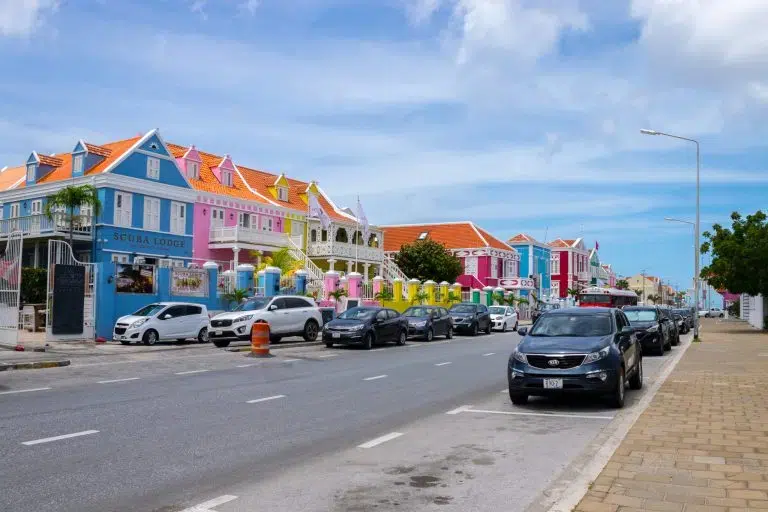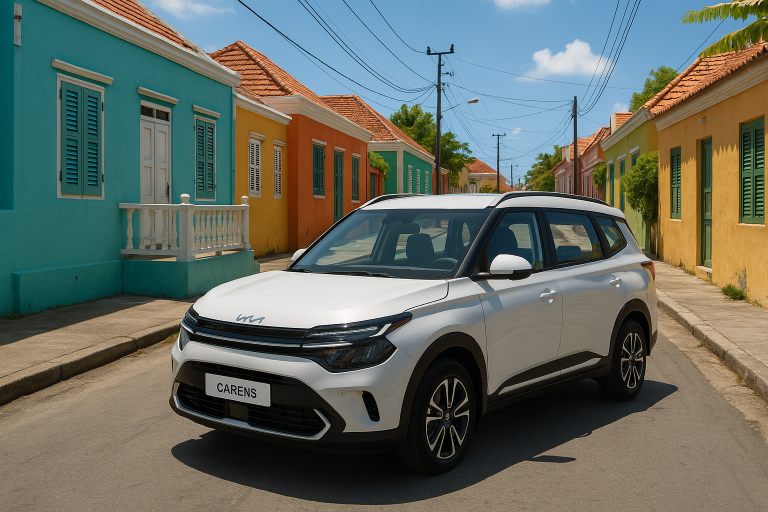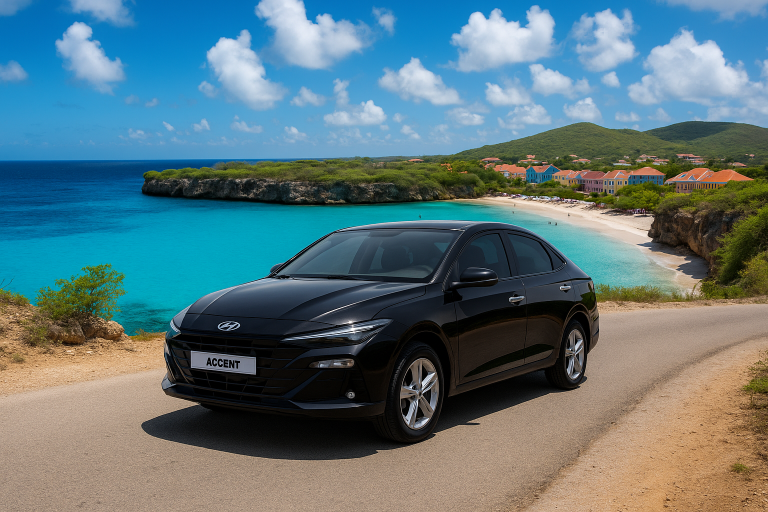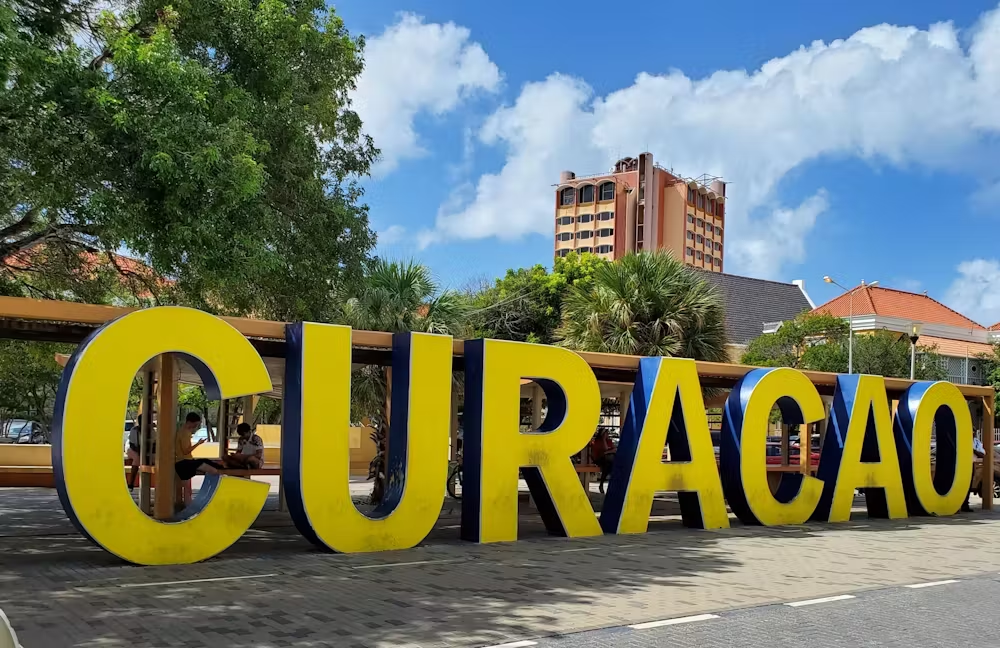1. Driving directions, license plates and signs standards
- On Curaçao driven on the right.
- Road signs on the island largely follow the European standard (as in the Netherlands) – warning triangles, circular command signs, red-framed prohibition signs, etc.
- Still, some traffic habits (such as unclear priority rules) may deviate in practice.
2. Speed limits
There is some variation in sources – the most commonly cited limits are:
- Within built-up areas: ± 40 km/h
- Outside built-up areas: ± 60 km/h, unless otherwise indicated
- On freeways (ring roads or wider roads): up to 80 km/h when indicated
3. Priority and intersections
- Retrieved from T-junctions through traffic usually has the right of way (so even if you are coming from the right).
- At intersections, traffic from the right often has the right of way unless signs indicate otherwise. But in practice, that rule is not always applied consistently.
- On traffic circles: traffic already on the traffic circle usually has the right of way. Sometimes there are different rules depending on traffic signs.
- “Traffic from the right” is not always obvious: even if you are coming from the right, in practice you may sometimes have to give way to traffic traveling on the through road.
- Shark teeth or road markings indicating who has the right of way are sometimes faded or poorly visible, requiring drivers to be extra alert.
4. Obligations & prohibitions
- Seat belts are mandatory for all occupants, both front and rear.
- Use of a cell phone while driving is prohibited unless with a hands-free system.
- Pointing lights, brake lights or turn signals: some cars have faulty brake lights or do not consistently turn direction, so count on that with caution.
- Alcohol & driving: the law explicitly does not abolish a limit, but states that driving under the influence is prohibited. Many sources therefore advise “zero drinking” if you are still going to drive
- Children under 5 are not allowed to ride in the front seat and must be in an appropriate child seat in the back.
- You must be able to show that your vehicle is insured (at least third-party insurance) and you must have your driver’s license, rental agreement or registration certificate with you.
- Parking violations can be severely punished, possibly even by a wheel clamp.
5. Practical reality & unwritten rules
- Traffic rules in Curaçao are not always strictly enforced – some drivers brake suddenly, forget to indicate direction or stop in the middle of the road to greet someone.
- Honking is a communication tool: people often use it to indicate they want to merge, or as a gesture of thanks.
- Sometimes drivers temporarily block the road to talk with acquaintances for a while. Patience is important.
- Roads can become slippery when it rains, especially curves or slopes. Extra caution is needed then.
- There are few if any highways in the classic sense – the Willemstad ring road is one of the few multi-lane roads.
- Because the infrastructure (lighting, marking, road maintenance) in some places is less perfect than in Western countries, extra alertness is crucial.
Comparison with Europe, the United States and South America
Aspect
Europe (Western Europe)
United States
South America (general)
Curaçao (erop afwijkend / vergelijkbaar)
Driving direction
Mostly right (UK is left)
Right
Mostly right-wing (except Guyana/Suriname)
Right (as in US & Europe)
Road signs
Standardized via Vienna Convention, clear signs, often well maintained
Own style (MUTCD) with American symbols
Mix – some countries with European influences, others with local variations
European-style signs, but maintenance and visibility is variable
Priority rules
Generally clear signs, right of way at “unguarded” intersections, traffic circles often with clear signs
Lots of use of “stop” and traffic lights, all-way stop, etc.
In some areas more informal, unclear intersections, sometimes local custom tinkers
Official rules exist (through road priority, traffic circle priority, etc.), but not always followed in practice
Speed limits
Clear limits (e.g. within 50 km/h, on highways 100-130 km/h)
State to state different (e.g. 25-35 mph within city etc.)
Depends on country, sometimes low limits or little controlled
Relatively low limits (40 inside, 60 outside, 80 on highways)
Traffic discipline
Usually pretty tight, good compliance with rules
Reasonably regulated, often stricter enforcement
More tolerance for deviant behavior in some countries
Regulations exist, but compliance is variable – you see unexpected stops, poor use of turn signals, etc.
Right on red (“right on red”).
Usually prohibited unless indicated
Allowed in many states, unless sign “No turn on red”
Not allowed in most countries (depending on country)
Not allowed in Curaçao, even if some drivers “honk” when stopping does not guarantee that it is allowed.
Alcohol & driving
Often strict limits (e.g., 0.5 promille or less)
State laws vary, often 0.08% BAC or stricter rules
Strict rules in many countries but enforcement varies
The law states “drunk driving is prohibited” with no precise limit; recommended is “zero drinking” if you are still driving.
Some points of interest in the equation
- In Europe and the US, many traffic rules are precisely defined, often supported by clear road markings, signs and technological enforcement (radars, cameras).
- Many South American countries have a more flexible interpretation of the rules – traffic infrastructure can vary, and road markings are often less clear in rural areas.
- In this sense, Curaçao may be similar to some Latin American countries: formal rules are present, but in practice local customs are important.
What tourists should look out for in Curaçao
As you drive around Curaçao in a rental car, pay attention to the following tips for safe and smooth driving:
- Use good navigation
Roads can be confusing, some routes are narrow, and signs are not always clear. Use GPS or reliable maps. - Drive defensively & anticipate deviant behavior
Drivers may brake suddenly, stop, fail to change direction, or just abruptly enter your lane. - Keep extra distance
Because brake lights sometimes malfunction or turn on late, keeping adequate distance is crucial. - Be careful at intersections and traffic circles
Slow down, look carefully and don’t blindly rely on your (perceived) right of way rule. - Be alert when it rains
Roads become slippery and may have potholes or damage. Adjust your speed accordingly. - Park with caution
Park in legal spots, follow sign orders, and be mindful of the risk of wheel clamp if you park illegally. - Illuminate & be visible
Especially at dusk or at night, parts of the road may be poorly lit. Use your lights correctly and be extra alert. - No “right on red”
Stop at red lights, even if you want to turn right. Wait until green. - Be sober
Driving after alcohol is prohibited by law; avoid any risk. - Check your vehicle
Check the operation of brake lights, turn signals, tires and lights when taking over the rental car.
Settle for a slightly slower pace
Haste can cause accidents. The roads are not highways, and safety comes first.
Rent a car on Curacao with Cura Explore Car Rentals
Cura Explore Car Rentals has only new autos, brings and picks up autos on location, sits next to the airport and has only positive reviews.
Easily book your rental car online through this link.





